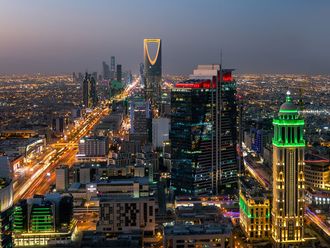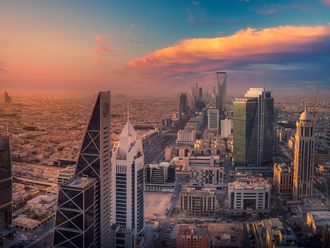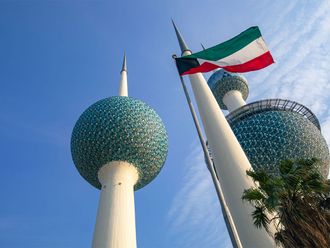
For decades, the Middle East controlled the oil supply and managed its pricing. Drastically decreasing demand coupled with a growing appetite for alternative energy sources has increased the Gulf states’ government debt from approximately $100 billion (2014) to $400 billion (2018).
If they continue in this direction, the International Monetary Fund (IMF) projects the region's financial wealth to be depleted by 2034. Thus, for those that haven’t started, the clock for diversified investments is ticking - and the time to start is now.
A handle on supplies
While oil supply and demand issues are driving the need for differentiated investment strategies, they’re not the only elements at play. The COVID-19 crisis added a whole new layer of technology and supply chain disruptions.
Take the automotive industry for example. Tesla’s presence in the Dubai Mall speaks volumes. When looked at alongside online automotive purchase and rideshare options, it’s clear why the UAE needs to rethink and redefine dynamic, strategic investments, outside of the region to generate a new well spring of returns.
Transition strategies
Fortunately, from a capital flow perspective, a revenue perspective, and an investment perspective, there’s already a massive shift occurring with Middle East countries’ reliance on oil, which involves money flowing out of the region. The focus now lies in how the region can capitalize and maximize the value of this transition.
Making the most of this shift and ensuring a smooth transition demands that private equity firms and corporates have a plan in place to execute the following:
Build an infrastructure
Most Middle Eastern investment firms have deep regional roots comprised of extensive experience and relationships across the area. However, expanding investment options and horizons is timely and opportune.
To do so requires building infrastructure that involves hiring local talent; designing the systems for talent to support investment activity through the development of local relationships; and asking questions that determine investment focus and decision-making processes.
The benefits of building infrastructure are well worth the time and resource commitment.
Consider the fact that many major US and European investment firms usually have a global footprint and deploy capital on a diversified basis. While this may not be standard practice in the UAE yet, the region’s shifting economic landscape is creating a new dynamic.
A few years ago, for the first time, a major UAE-based firm opened an office outside of the region. Soon after, other local office locations followed around the world.
This sets an important precedent and paves a path for increasing scale and diversifying investment globally to further UAE-based firms’ ability to drive change.
Push the pace
Given the acceleration of and urgency around disruptions, driven by COVID-19, the speed at which investment diversification occurs is essential. Specifically, future success demands the rapid growth of investment outside of the region - and outside of oil.
One approach we have seen in the region is adding a conditional term for investees, with the goal of drawing activity back into the region, by only making an investment if the business relocates to the region.
Foster trust by developing transparency
One situation can spark distrust across an entire region. Reports of Middle East private equity firm Abraaj Group’s bankruptcy, and allegations of misleading investors that led to Al Masah Capital’s liquidation serve as cautionary tales.
When selecting an investment partner, trust and relatability need as careful consideration as financial footing. Cultivating a willingness to understand geographical and cultural differences is a critical component of a successful investment partnership.
As a general rule, it will take at least a decade to see returns. Typically, the first-half of an investment firm’s lifecycle is focused on the deployment of capital, while the second-half is on the realization of investments and the return of capital to investors.
In today’s environment, this timeframe is stretching out even longer. Understanding the time required to build the relationships and having the patience to let them grow in value is crucial. But without transparency, none of this is possible.
Action plan
It’s evident that the clock is ticking for Middle Eastern firms. The shifting supply of and demand for oil, geopolitical instability, and COVID-19 are powering regional restructuring turnaround and performance improvement activity.
In turn, this economic swirl will propel M&A and consolidation. Firms that are able to move now - and move fast - to geographically diversify investments can create future opportunities from today’s uncertainties.
- Paul Aversano is Alvarez & Marsal’s Managing Director and Global Practice Leader at the Global Transaction Advisory Group.









